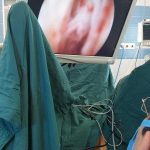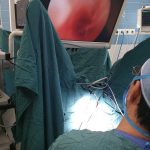Learn More About VAAFT Fistula Surgery Since the day that perianal fistula disease is known, surgeons have been trying to treat the disease without damaging the anal sphincters that control the stool. However, the nature of the disease and its spread to the anatomical areas around the anus, which is not easy to identify, have caused recurrence of the disease and in most cases led surgeons to treat fistula using more sphincter discontinuation methods.
Considering the value of anal sphincter muscle in the control of excretion, it seems that, if possible, prior to the decision to have a fistulectomy, all the procedures in which the sphincter is preserved should be used.
There are several methods available to surgeons today that can treat the fistula without acceptable anal sphincter muscle failure.
Common surgical procedures include the use of seton columns, fistula tracheal closure (LIFT) and rectal muscle mucosa (Advancement Flap), and the other is the use of materials as a fistula tract filler that can provide a scaffold for growth. Has fibroblasts.
The oldest of these is fibrin glue, which is less popular with surgeons due to its use problems and high recurrence rate. Another product is a plug that is made from the pig intestinal mucosa and has been used in numerous patients in Iran and has had a success rate of about 60 to 70%. The high price of this product has limited its use. And finally, biological fillers are recently used substances that are in experimental stages and have not yet had the experience of using them in our country.
Considering the consequences of stool incontinence and its impact on people’s lifestyle, especially in the culture of our beloved country of Iran, it is necessary for the community of surgeons to invest in more sphincter preservation techniques.
New VAAFT (Video Assisted Anal Fistula Treatment) for the first time in Iran
In VAAFT surgery, a fistula duct is identified using a 1mm ultra-thin telescope and a 2mm working channel then the fistula’s inner hole is closed and the duct is fully flushed and cut and without having to cut the valuable sphincter muscles with At least skin ulcers treat anal fistulas.
This new method, which has been developed and introduced over the last 2-3 years, has not been available in our country until recently, and has recently been used to treat a variety of complex anal fistulas as well as to treat hair cysts.




